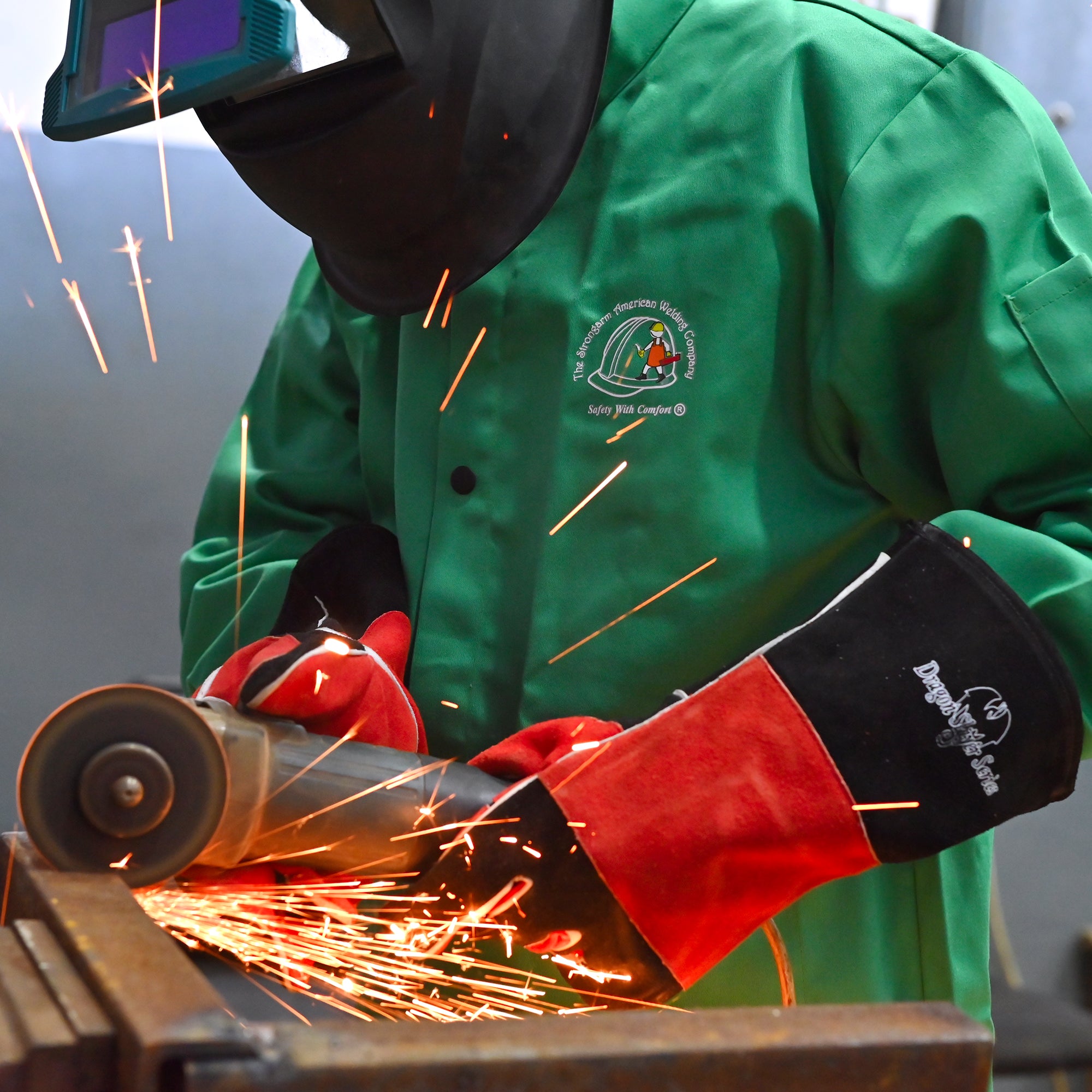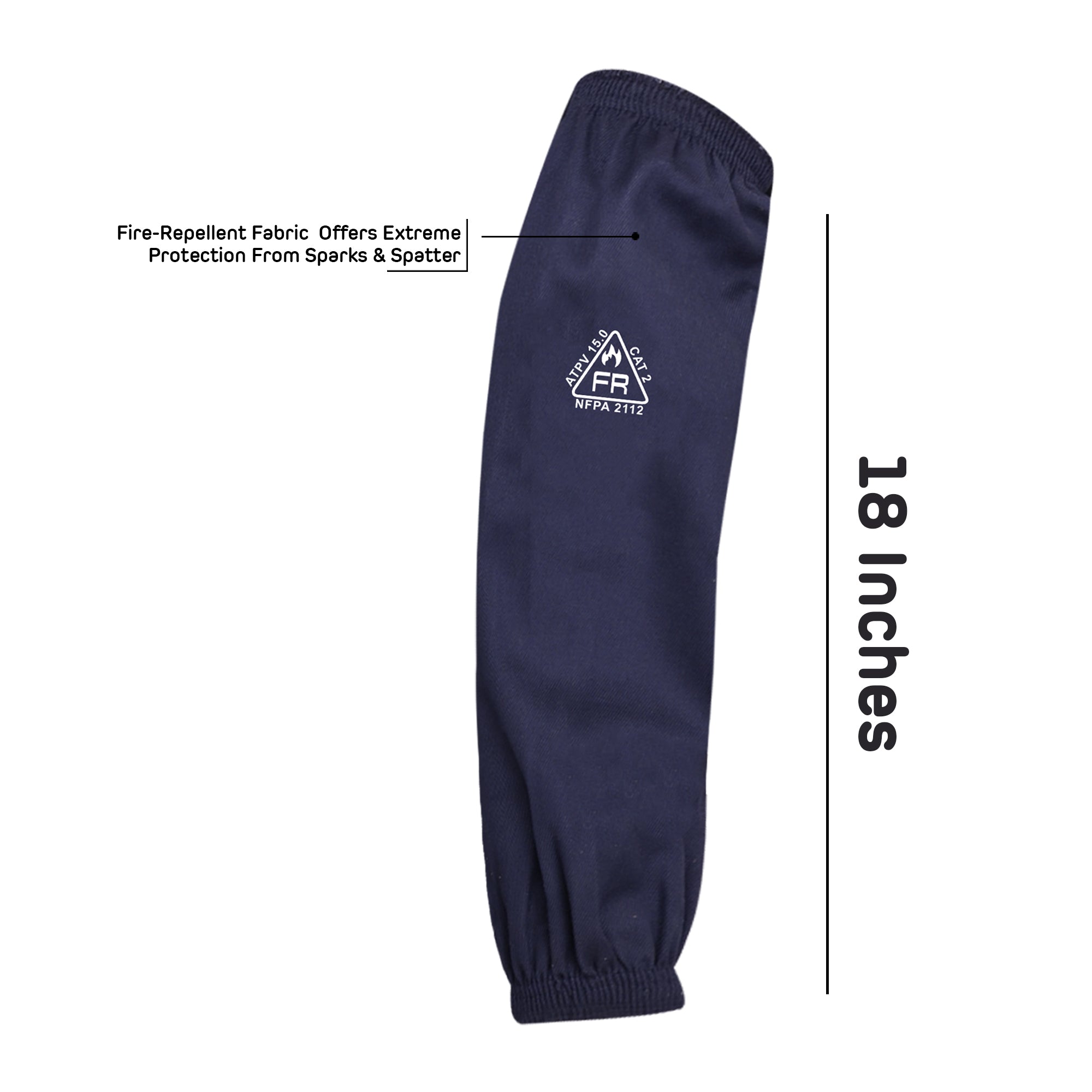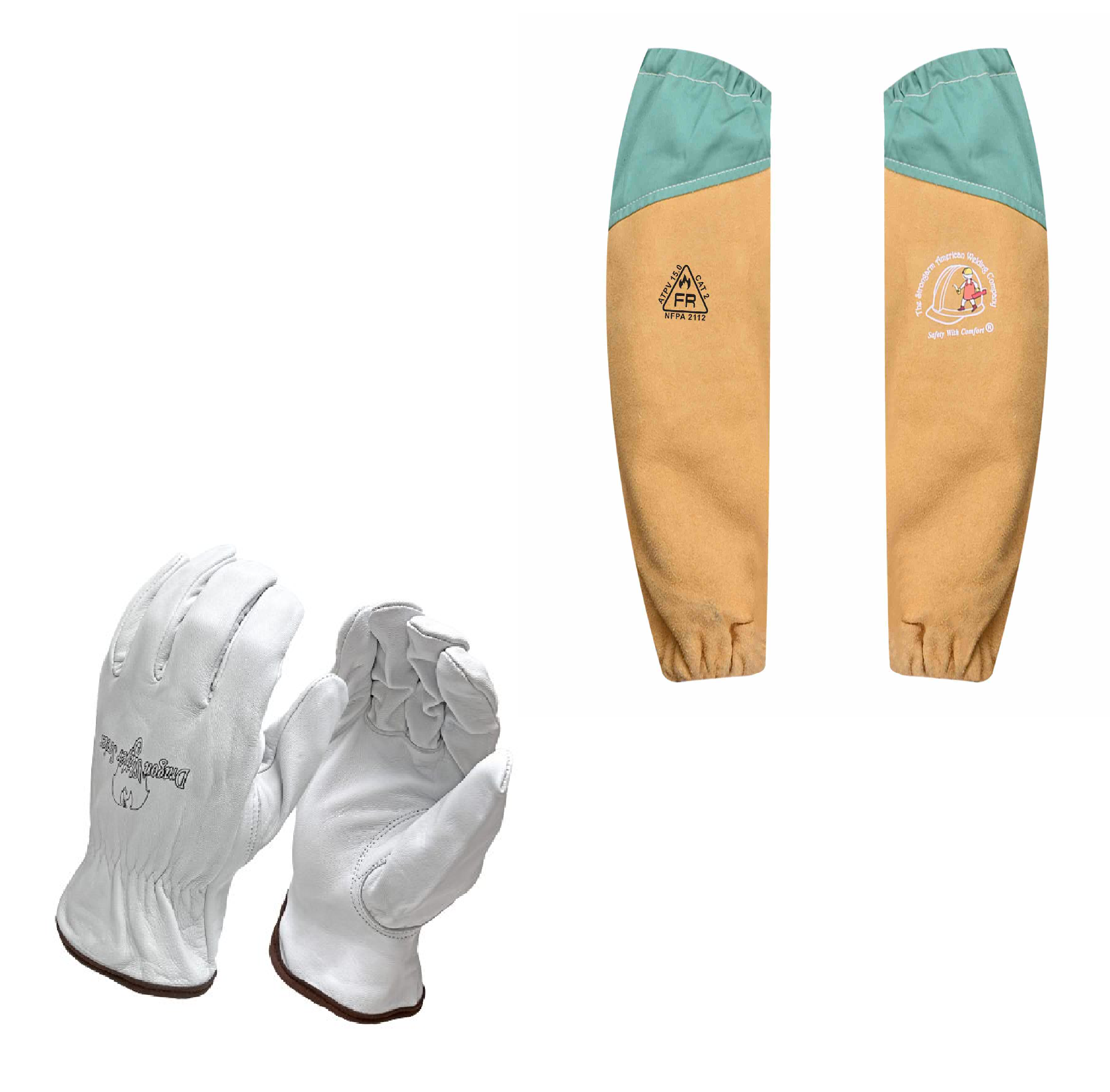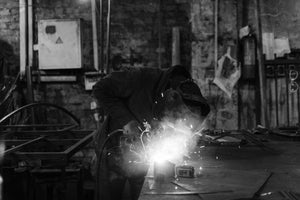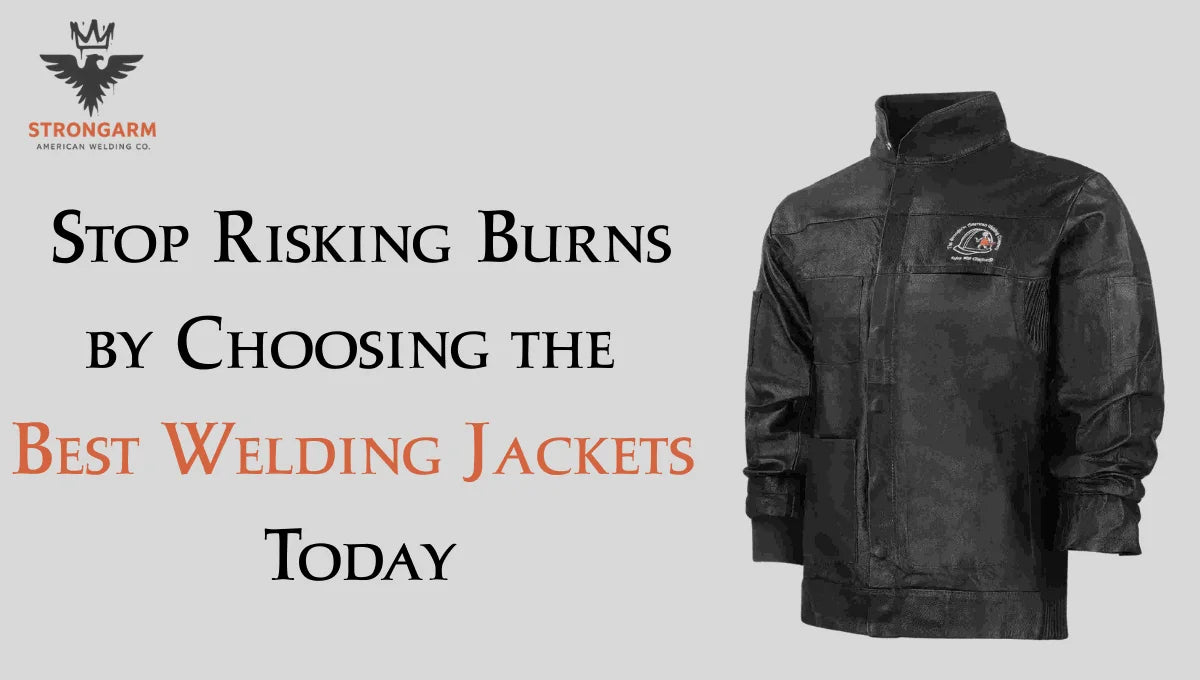Safety is the most important thing when welding. And one of the best ways to stay safe while welding is to wear a welding apron. Welding aprons come in different styles and materials, so you must choose one that suits your needs. In this blog post, we’ll give you welding apron tips on how to choose the best welding apron for you.
Importance of Welding Aprons
Before diving into the specifics, it's essential to understand why welding aprons is crucial:
1. Protection from Sparks and Heat
Welding generates high temperatures and sparks that can cause burns. An apron shields the body from these hazards.
2. Prevention of Burns and Injuries
Molten metal and hot debris can cause severe injuries. A quality apron can prevent such accidents.
3. Extended Workwear Longevity
Wearing an apron protects your clothing, making your workwear last longer.
Material
The material used for a welding apron is very important. Different welding apron materials provide different levels of protection, durability, and comfort. Here are the most common materials used in welding aprons:
Leather
Leather is the most traditional and popular choice for welding aprons. Its natural resistance to heat, sparks, and molten metal makes it ideal for welding environments.
Pros
Heat Resistance
- Leather is naturally resistant to high temperatures, making it ideal for shielding welders from sparks, molten metal, and intense heat generated during welding.
- Provides excellent protection against burns and heat-related injuries.
Durability
- Leather is highly durable and can withstand heavy wear and tear. Compared to other materials, it is less likely to tear or puncture.
- It is long-lasting, making it a cost-effective investment despite the higher initial cost.
Protection from Sparks and Spatter
- Leather's thick, robust nature provides an effective barrier against sparks, hot metal spatter, and slag, which are common in welding environments.
Comfort and Fit
- Leather aprons tend to conform to the body over time, providing a custom fit that enhances comfort during prolonged use.
Cons
Weight
- Leather aprons are relatively heavy, which can be tiring to wear for extended periods. This can lead to fatigue, especially in high-intensity welding jobs.
Breathability
- Leather is not very breathable, which can cause discomfort in hot and humid conditions. Welders may experience increased sweating and heat buildup.
Maintenance
- Leather requires regular maintenance to keep it in good condition. It needs to be cleaned and conditioned to prevent it from drying out and cracking.
Cost
- Leather aprons are generally more expensive than those made from other materials. However, their durability can offset the higher initial investment over time.
Flame-Resistant Cotton Welding Aprons
Flame-resistant cotton aprons are a lighter and more breathable alternative to leather. They are chemically treated to enhance their fire-resistant properties.
Pros
Lightweight and Comfortable
- FR cotton aprons are significantly lighter than leather aprons, making them more comfortable for long periods of wear.
- Their lightweight nature reduces fatigue, allowing for better endurance during extended welding sessions.
Breathability
- FR cotton is more breathable than leather, which helps in reducing heat buildup and sweat. This is particularly beneficial in hot and humid working environments.
Flexibility
Cotton aprons are more flexible, offering greater freedom of movement. This flexibility is advantageous for tasks requiring agility and precision.
Ease of Maintenance
- FR cotton aprons are easier to clean and maintain compared to leather. They can often be machine washed, though it is important to follow specific care instructions to preserve their flame-resistant properties.
Cost
- Generally, FR cotton aprons are less expensive than leather aprons, making them a more budget-friendly option for welders.
Cons
Heat and Flame Resistance
- While FR cotton provides good protection against sparks and minor heat exposure, it does not offer the same level of heat resistance as leather.
- Not suitable for high-temperature welding tasks that generate a lot of sparks and molten metal.
Durability
- FR cotton is less durable than leather and can wear out more quickly, especially in heavy-duty welding environments.
- More prone to tearing and abrasion, requiring more frequent replacement.
Chemical Treatment
- The flame-resistant properties of FR cotton come from chemical treatments, which can diminish over time and with repeated washing. This may require re-treatment to maintain effectiveness.
Protection Level
- FR cotton aprons offer less protection against severe welding hazards compared to leather, making them less suitable for high-risk welding applications.
Kevlar
Kevlar is a high-performance synthetic fiber known for its exceptional strength, heat resistance, and versatility. While not as commonly used as leather or flame-resistant (FR) cotton, Kevlar offers unique advantages that make it an excellent choice for specific welding applications.
Pros
Superior Strength and Durability
- Kevlar is renowned for its incredible tensile strength, making it highly resistant to cuts, punctures, and abrasions. This durability ensures long-lasting protection, even in demanding welding environments.
- Kevlar aprons are less likely to wear out quickly and maintain their protective qualities over extended periods.
Heat and Flame Resistance
- Kevlar can withstand extreme temperatures without melting or degrading, providing excellent protection against heat and flame.
- Unlike FR cotton, which is chemically treated for flame resistance, Kevlar's flame-resistant properties are inherent to the material. This means the protection does not diminish over time or with washing.
Lightweight
- Kevlar is significantly lighter than leather, making it more comfortable for prolonged use. This lightweight nature reduces fatigue, allowing welders to work more efficiently.
- The lighter weight also contributes to better mobility and flexibility, which is beneficial for tasks requiring precision and skill.
Cut and Abrasion Resistance
- Kevlar's exceptional cut resistance provides additional safety against sharp objects and edges that may be encountered during welding tasks.
- This resistance makes Kevlar aprons suitable for various applications beyond welding, including tasks involving cutting and handling sharp materials.
Chemical Resistance
- Kevlar is resistant to many chemicals, making it suitable for use in environments where exposure to various substances is a concern.
Cons
Cost
- Kevlar aprons are generally more expensive than leather or FR cotton aprons. The high cost can be a significant consideration, especially for budget-conscious buyers.
- Its durability and long-term performance may justify the initial investment in Kevlar, but careful consideration is required.
Limited Availability
- Kevlar aprons are less commonly available than leather or FR cotton aprons. This limited availability can make finding the right size and style harder.
- As a specialty product, Kevlar aprons might not be stocked by all suppliers, potentially leading to wait times for orders longer.
Comfort and Fit
- While Kevlar is strong and durable, it can be stiffer than other materials, potentially affecting comfort and ease of movement.
- Kevlar aprons may require a break-in period to become more comfortable, unlike leather, which conforms to the body over time.
Breathability
- Kevlar is not as breathable as FR cotton, which can lead to discomfort in hot and humid environments. However, it generally offers better breathability than leather.
Maintenance
- Kevlar aprons may come with specific care instructions to maintain their protective properties. This can include avoiding certain chemicals or cleaning methods that might degrade the material.
Length
The length of the welding apron is another important factor that impacts protection and comfort. The right size depends on the type of welding you do and your personal preferences.
Full-Length Aprons
Full-length aprons provide maximum coverage, extending from the chest down to the shins or ankles. They are ideal for welders who need comprehensive protection.
Maximum Protection
Full-length aprons offer extensive coverage, protecting the torso, thighs, and legs from sparks, heat, and molten metal.
Heavy-Duty Welding
These aprons are suitable for heavy-duty welding tasks that generate a lot of debris and require significant protection.
Mobility
While they provide excellent protection, full-length aprons can restrict movement, making them less suitable for high-mobility tasks.
Half-Length Aprons
Half-length aprons cover the torso and upper thighs and end around the knees. They offer a balance between protection and mobility.
Good Protection
Half-length aprons still provide substantial protection, particularly for the upper body and thighs.
Increased Mobility
These aprons allow greater freedom of movement, making them ideal for tasks requiring agility and flexibility.
Comfort
Half-length aprons are lighter and less cumbersome than full-length versions, making them more comfortable for prolonged wear.
Bib Aprons
Bib aprons cover the chest and upper legs but expose the lower ones. They are a versatile choice for various welding tasks.
Versatility
Bib aprons can be used in various welding applications, offering good upper-body protection.
Layering
These aprons can be layered over other protective clothing, such as fire-resistant pants or leggings, for added protection.
Comfort and Mobility
Bib aprons provide a good balance of protection and comfort, allowing easy movement.
Features
Modern welding aprons have various features to enhance safety, comfort, and functionality. Here are some key features of welding apron to consider:
Adjustable Straps
Adjustable straps are essential for ensuring a secure and comfortable fit. Look for aprons with adjustable neck and waist straps, allowing you to customize the fit to your body size and shape.
Comfort
Properly adjusted straps distribute the weight of the apron evenly, reducing strain on the neck and shoulders.
Security
Adjustable straps help keep the apron in place, preventing it from shifting during welding tasks.
Pockets
Pockets can add convenience by providing storage space for tools and accessories. Consider aprons with strategically placed pockets that are easily accessible without compromising safety.
Tool Storage
Pockets allow you to keep essential tools and accessories within reach, improving efficiency and workflow.
Safety
Ensure pockets are designed to prevent sparks from entering and igniting the contents.
Reinforced Areas
Reinforced areas, such as double-layered sections or additional padding, enhance the apron's durability and protection. Common reinforced areas include the chest, abdomen, and knees.
Durability
Reinforced areas extend the lifespan of the apron, especially in high-wear zones.
Enhanced Protection
Additional layers protect against sparks, heat, and sharp objects.
Flame-Resistant Thread
The stitching in a welding apron is just as important as the material itself. Look for aprons stitched with flame-resistant thread to ensure the seams can withstand high temperatures and exposure to sparks.
Safety
Flame-resistant thread prevents the seams from melting or igniting, maintaining the integrity of the apron.
Durability
High-quality stitching extends the lifespan of the apron, preventing premature wear and tear.
Quick-Release Buckles
Quick-release buckles allow you to remove the apron quickly in an emergency. This feature is essential if you must swiftly escape from a hazardous situation.
Safety
They provide a fast and efficient way to remove the apron in emergencies.
Convenience
These buckles make putting on and removing the apron easy, improving overall usability.
Tips for using a welding apron
A welding apron is an important piece of personal protective equipment for welders. It protects the wearer from flying sparks, hot metal shavings, and other dangerous debris. While most welding aprons are made from flame-resistant materials, choosing one that is comfortable and fits well is still important.
Here are some welding apron tips for how to choose welding apron:
- Make sure the apron is made from flame-resistant materials.
- Choose an apron that is comfortable to wear and fits well.
- Make sure the apron covers the front of your body completely.
- Look for an apron with pockets or pouches to store tools and other items.
- Consider buying an adjustable apron so you can customize the fit.
Conclusion
Choosing the right welding apron involves balancing protection, comfort, and practicality. Leather and FR cotton are the primary materials, each with advantages and disadvantages. The length of the apron, whether a waist or bib style, should match the specific needs of the welding tasks. Additionally, features like pockets, adjustable straps, and reinforcements can significantly enhance the functionality and comfort of the apron. By carefully considering these welding apron tips welders can select an apron that provides optimal protection and improves their overall work experience.
Strongarm is the leading welding manufacturer and provider in America. We have a team of trusted professional welders offering a wide range of welding aprons and gears to suit your needs. Contact us today for all your weldings essentials.

